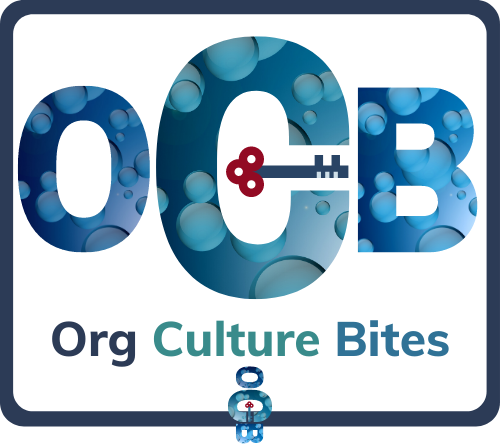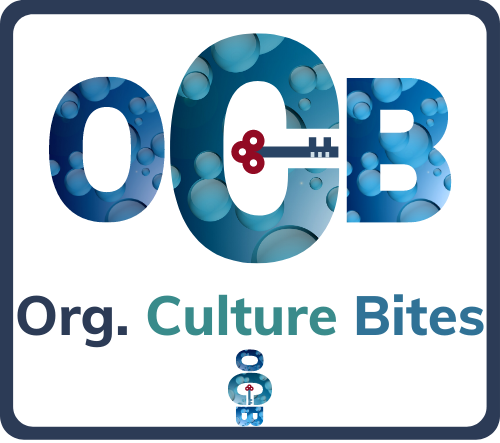-
 play_arrow
play_arrow
-
 play_arrow
play_arrow
-
 play_arrow
play_arrow
-
 play_arrow
play_arrow
- Home
- keyboard_arrow_right Advisory
- keyboard_arrow_right Capability Development
- keyboard_arrow_right Respect – Diversity & Inclusion; It’s a ‘two-way street.’

How your organisational culture experience and employment brand reputation could be the key to prosperity in Australia.

By Angela Lewis, Founder OCB.
This article covers:
• Our tolerance of differences
• Why D&I can be difficult
• Treating D&I as workplace change
• The power of awareness & authenticity
• What High Performance Cultures do
• Your reputation matters in the market
• Australian examples of success
• Special offer: Discounted access to resources for readers
Our tolerance of differences
You may have observed this before, when travelling overseas it seems like people are a lot more open to the obvious fact that humans are different in different countries. It seems logical, that when you’re a visitor, you tend to be more observant of the faces, places and activities around you that are unfamiliar. It’s interesting, even exciting to learn something from these differences, to be amused by some of the ‘oddities’, or seek to understand why things are the way they are, especially when it’s in paradox to your own norms and expectations.
You may even be lucky to meet a local, who is enthusiastic about sharing their culture and ways with you. Exploring our human differences is a huge part of the enchantment of being in a foreign country. We expect it; even actively seek it out with interest.
Yet, when I reflected on how we treat differences in the workplace, it struck me that we tend to be so much more closed and nervous about exploring our differences and learning something new from our variations in views.
Why D&I can be difficult
All too often, efforts to embrace diversity and bring about more inclusive, respectful, collaborative environments are unable to gain momentum. Typically, this is because (among other things):
- It’s not taken seriously -some organisations believe thata generic policy statement is all that needs to exist to maintain compliance and reporting ‘minimum requirements.’ In some cases, colleagues share a belief that anyone who seeks to leverage D&I programs, really isn’t taking their career prospects seriously – to be successful, you need to be more committed.
- It’s doesn’t always seem logical: Giving minority groups artificial advantage is counter intuitive in cultures where ‘fairness’ is understood to be about treating everyone the same way. Consider the claim: “If we are all equal and our rewards are based on merit, why give some people more help to ‘get ahead!?”
- Competing priorities and values cause conflict. Sometimes, functional agendas appear to be at odds with each other, or they require different approaches to achieve different performance goals. It can be extremely difficult to ‘see the other perspective,’ negotiate agreement or be inclusive if you come against ongoing, immoveable problems.
- It’s too complicated, even difficult, to be fair. Once you give an extra benefit or greater flexibility to one person or group, you are compelled to do it for all. This is often not feasible for budgets or too complicated from a prioritisation or scheduling perspective.
- Obsessive political correctness can seem counterproductive or work against our culture. Having a dig, joking about ourselves and others has often been a part of Australian cultural DNA. In fact, we saw in ABC’s recent Australia Talks survey that many people feel that political correctness has gone too far – that people feel they are being discriminated against because they can no longer express themselves freely or openly.
- We don’t always want or like ‘difference’ when it puts our own interests at risk. It can be disruptive, time consuming, painful and challenging. ‘If people don’t like the way we operate, or need exclusive allowances, then they can find somewhere else to work.’
- Generational disconnect. How often have you heard (or said yourself) that < insert generation> “have no idea about hard work,” or “had it better in their day.” I realise now, it’s usually the same gripe, just different times! No matter what side of the generation gap, “we” are always better and “the others” are frustratingly ‘out of touch.’
It may not be popular to say this… but all of the above points are completely understandable resistance to change. When we are familiar with a certain way of being, working or getting things done, it is difficult to see the need for or benefit of shifting your mindset or doing things differently. To be fair, all of these perspectives are valid and need to be taken into consideration In order to make real, meaningful change and progress in building respect, diversity and inclusion in our society and workplace.
Treating D&I as workplace change
If you seek to make change a reality, it’s wiser to use both a carrot AND a stick. Although in my experience, the carrot always wins! I (and the majority of Australian!) believe that in our current environment, we need to think more about our humanity, reactions, and emotions. To be mindful and inclusive of the impact that evolution and change has on ALL parties. We must invest in really, genuinely understanding the beliefs and concerns of others, particularly when they seem to be far from our own.
Being heard, or even exploring different perspectives about what sits behind them, moves things forward dramatically. One of the most powerful realisations I had when I lived in Japan over 20 years ago, was actually how similar we all were deep down. Regardless of age, ethnicity, religion or gender, we all share similar loves and fears, but real progress came from seeking to understand them.
At work, people want to feel valued. Employees are often more open to sharing ideas about potential opportunities or more likely to see an ‘upside’ to the change if they are part of the journey. Involving people in the conversation about the change – or even the strategy or logic behind it – can help build a greater sense of control and ownership of the outcome, as well as their relationship to it. In fact, operational momentum is often more dynamic and powerful when you encourage participation. Change is a ‘two – way street.’
The power of awareness & authenticity
Let’s consider another ‘big topic’ in contemporary work life that relates to both our need for wellbeing, balance as well as D&I. Anna Green, senior partner at BCG conducted a survey on D&I for the AFR in June this year; commenting “An organisation may have flexible working, but if it is not genuinely supported and considered a pathway to be successful, people will not trust it.”
D&I initiatives, like any other important change is like building a bridge. It’s about identifying where you are now, where you need to be and why you want to get there. You need to figure out what it means to you, your organisation; the people that will help you build it, as well as provide a sustainable way for everyone to get there (if they share in your vision for being on the other side!)
This is where organisations, their culture asset value and employment branding potential fail to be fully realised. Fragmented cultures occur when people aren’t completely aware or aligned on what they truly believe in about the business, or why. People don’t always trust what they are being told and promised or the rationale behind it. However, they will know the answer in the reality of the actions they observe and their experiences in the workplace. Quite often the observed and ‘felt’ experience is very different to the ‘words’ and expectation. This is where I see massive culture gaps exist. Organisations who are connected to their customer and employee community, those who are aligned in what they ‘Think, Say and Do’ (their culture) are more often than not the superior performers.
Organisations and employees may be told of the numerous benefits financial and operational benefits of D&I. Notably, the Bersin by Deloitte 2015 High Impact Talent Management research found that companies that are inclusive have 2.3 times higher cash flow per employee over a three-year period, 1.8 times more likely to be change-ready and 1.7 times more likely to be innovation leaders in their market.
But somehow, the energy and opportunity does not always translate. Initiatives are met with resistance (like those I mentioned above). There is disconnect or falsehood surrounding the shared beliefs in D&I ‘opportunities.’ The beliefs, values or experiences of leaders and employees may also be significantly varied. Over time, culture – what is said, what is formally operationalised and what is actually done – becomes dysfunctional where fragmentation and confusion reigns.
“There are huge differences between companies and sectors. Unless you understand your organisation and culture, you are unlikely to develop programs as effective as you need,” says Green.
There is no use saying something, let alone creating a policy about it if you don’t really believe it. Neither is it worth making promises to people that you can’t keep. Your culture reflects your beliefs and attitudes about people, as well as your willingness to follow through with your espoused values and commitments. In today’s accountable, transparent world, if your actions don’t meet your words – organisationally and individually – you will be found out.
I can’t tell you how many organisations I have observed with ‘collaboration’ as a core value, at the same time operating in functional silos that cause crippling performance friction. Or the numbers of different situations with colleagues or team members whose egos and ambition soar so far beyond compromise that they can’t help but compete before cooperate in order to ‘get ahead.’ So too, I have seen ‘value and respect’ being far too often, only lip service, when met with undermining, condescending or discriminatory reactions and behaviours in situations of conflict.
If we did, truly value and respect others – especially those who are different to us compete with or are dependent in some way on us – surely we should make the effort to better understand ourselves, our needs and fears as well as those of others to find a more constructive solution?
What High Performing Cultures do:
Because that is what strong, high performing work cultures do. Quite often, they will also be dynamic, courageous, and not afraid to embrace diversity in its broadest sense to solve problems. In fact, they leverage complexity and uniqueness to drive superior performance. They are themselves flexible in their organisational approaches to meet the changing needs of the market and employees. They embrace technology and encourage creativity to explore innovation and possibility. Their rewards and incentives reflect the direction of behaviour they want to see, to meet the evolving nature of society and the market.
I saw this first hand in Diageo when it won multiple ‘Best Employer’ and Great Place to Work awards in the early 2000’s and I observed it recently working with Aon Hewitt across their Employer of Choice accreditation awards. I see it again with companies like Atlassian breaking ground with their generous transparency in sharing knowledge and their bold commitment to reducing environmental impact. All of these organisations have clear culture statements and supportive action in the absence of compliance or regulation.
In summary, an organisational culture that demonstrates strength is:
- Aware of its strengths and areas that need improvement in order to meet broad stakeholder expectations
- Aligned to organisational purpose (who they are) where they are going, why (focus on customer, product etc. for growth), and how they will get there (strategy).
- Has a culture, reinforced by operational focus, decision making, interactions and behaviours that are consistently known, valued and felt internally
- Connects to individual purpose and future expectations about the business
- Tackles challenges (like D&I or disruption) head on (not avoidant) and indeed leaps forward as a result of exploring and addressing obstacles
- Self regulates ahead of the market as part of their competitive armour
- Successful
Your brand and reputation matters to your market
Your Employment Brand is a statement about your purpose, culture and beliefs – what you, your organisation and your reputation stands for. If you want to be attractive and known as an ‘inclusive and respectful workplace’ you will need to demonstrate how this is aligned with your customer and culture expectations, as well as show evidence of how you have embedded supportive, valued policies and practices that have helped you achieve this.
Organisations such as Glassdoor, Seek, Indeed, LinkedIn and the exciting new aggregator Adoreboard are very effective at holding up the mirror to help you see where you really stand in the eyes of employees!
In summary, a strong employment brand is:
- Aligned to strategy and customer brand
- Executes cultural and performance aspirations
- Clearly defines what the organisation wants to be known for AND is transparent in the fulfillment of the promise
- Valued by the employee and diverse employee groups
- Consistent internally and externally
- Optimised to drive performance through people
“A Brand is a promise. Good branding is a promise kept.”
ABC’s Gruen program, November 2019
To operate as a high performing organisation, is to deeply understand your business as well as your culture and people. All of these important components will be complex, diverse and increasingly more so. Agility and responsiveness to change requires a top down and bottom up approach. Leaders must be inclusive, provide clear, informed direction, and develop programs aligned to strategic as well as cultural requirements. In parallel, they need to create an environment where employees are genuinely encouraged to voice concerns and be heard, request intervention when things are not working or to come forward with suggestions and ideas for improvement. Culture, respect and inclusivity is a two – way street.
Australian examples of success
Not sure where to start with your culture or D&I initiatives?
Here’s how others have taken action with great results:
- Leading global legal practice Ashurst has a reverse mentoring program within their D&I suite of initiatives to in Australia that has proven to be successful – with results measured as having a positive impact on people & business performance.
- Diageo, a global drinks manufacturer, FTSE top 6 ranking performer and has recently achieved the number one business globally for gender equality in the Equileap 2019 Global Gender Equality Report and Ranking. Diageo’s global parental leave policy offers female employees in all markets a minimum of 26 weeks of fully paid maternity leave. Diageo has also set a global minimum standard of four weeks paternity leave on full rate of pay in all markets, with a significant number of Diageo’s businesses moving to 26 weeks fully paid paternity leave. This includes the UK, North America, Thailand, Philippines, Singapore, Spain, Netherlands, Ireland, Italy, Russia, Colombia, Venezuela, and Australia amongst others.
- Bridging social gaps in the employment landscape and ensuring future ready talent rates highly in Virgin’s Australia’s day to day operational priorities. Over the last few years, they have actively changed the way they recruit, to be more targeted in order to attract and hire a more diverse workforce, ensuring a better representation of the community in its leaders. Recent programs include the equal intake of males and females for the 2018 Pilot Cadetship Program, which exceeded targets and increased female representation by more than 200%. They also redesigned their recruitment process in order to differentiate and be more culturally appropriate to attract and hire indigenous candidates. Virgin Australia has recently been nominated as a finalist for AHRI’s Indigenous Employment Award category this year.
- Australian Rehabilitation provider Rehab Management has effectively grown its business through providing services and programs that integrate employees with diverse employment needs, such as post-injury or disability, into the workforce. This year, Rehab Management was a finalist on the AFR’s shortlist of Most Innovative Health companies. CEO Marcella Romero was a finalist in Telstra’s Business Women Awards as well as Australian Growth Company Award finalist for Women in Leadership.
HBR Articles:
Alison Reynolds & David Lewis. Teams Solve Problems Faster When They’re More Cognitively Diverse. HBR MARCH 30, 2017.
Lisa Burrell. We Just Can’t Handle Diversity. A Research Roundup. HBR July – August 2016.
Gardiner Morse. Designing a Bias-Free Organization. HBR. July–August 2016.
Frank Dobbin & Alexandra Kalev. Why Diversity Programs Fail. HBR. July–August 2016 Issue
Online resources:
ABC’s Australia Talks survey. https://australiatalks.abc.net.au. OR https://iview.abc.net.au › show › australia-talks
Sally Patten. Companies are paying lip service to diversity. AFR BOSS. Jun 4, 2019. ying-lip-service-to-diversity-20190527-p51rnf.
Janice Gassam (Forbes). How To Measure The ROI Of Diversity Programs. https://www.forbes.com/sites/janicegassam/2018/12/21/how-to-measure-the-roi-of-diversity-programs/#244f84a424e7
Diversity Best Practices. Setting and Achieving Diversity Targets https://www.diversitybestpractices.com/sites/diversitybestpractices.com/files/attachments/2017/09/goal_setting_report_.pdf
Vivian Hunt Sara Prince Sundiatu Dixon-Fyle Lareina Yee, Delivering Through Diversity. McKinsey & Co. January 2018. https://www.mckinsey.com/~/media/McKinsey/Business%20Functions/Organization/Our%20Insights/Delivering%20through%20diversity/Delivering-through-diversity_full-report.ashx
© 2015 - 2019 Orgculturebites. Trademarks and brands are the property of orgculturebites


Post comments (0)